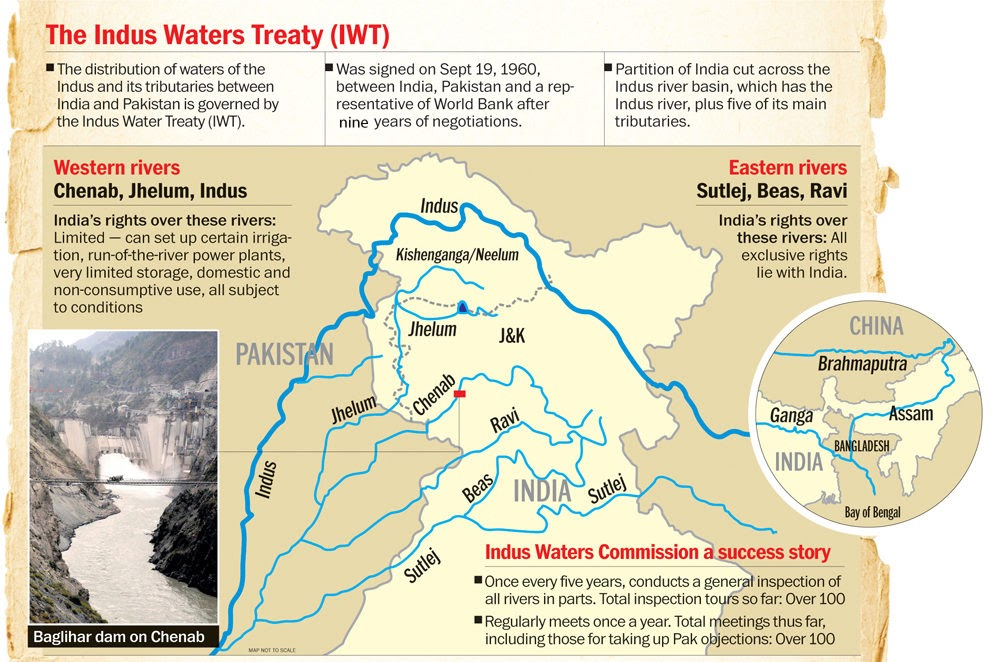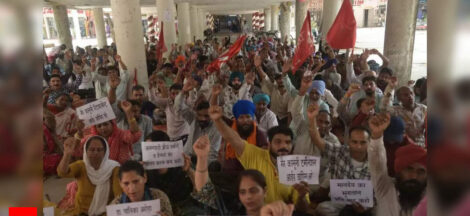By Anjan Roy
Water can catch fire easily. When it comes to the Indus waters, we are seeing how combustible it could be —at least verbally for now.
It might even be the flashpoint for a wider conflagration, an armed conflict. But there are sobering thoughts as well. It is in India’s interest to avoid a wider or long drawn out war, as that can derail India’s economic growth. Higher fiscal deficit from a war, or a diversion of from the compulsions of economic policy, could deeply hurt the development process.
The best way for India to punish Pakistan would be to start economically starve the country and work towards its ultimate economic bankruptcy, so that the hold of military over the civilian life gets loose.
Coming to Indus Water Treaty, putting the water treaty in abeyance was good brownie point but really implementing it could be tricky. And there lies the real sting of setting of the story.
There are now reports that India proposes to stop flows of the Chenab river, using the Baglihar dam. The Chenab is a western river and under the treaty India can make use only some limited ways. It is a run-of-the river project, implying only limited uses. Baglihar has a 900 MWs capacity hydroelectric power station. But its storage capacity is limited.
Setting aside the tray and diverting its waters, could really be cutting the jugular vein of Pakistan. The country abjectly depends on the use of these waters for its very existence.
But the decision could hurt the terrorist state only when the flow of waters into Pakistan is actually arrested. This means India has to have real infrastructure and instruments for achieving this goal.
The western rivers of the Indus water system, as also the eastern ones which flow through India, receive huge volumes of waters in the summer months when the glaciers and the upper reaches of the Himalayas witness higher temperature. The melting snows of the Himalayas release the millions of cusecs of waters into the rivers.
The Himalayas are geographically described as the third largest soft water storage in the world, the other two being the two polar regions, north pole and the Antarctica. The snows falling and freezing in the winter months, start melting in these hot months over the subcontinent.
The Indus water system has six rivers, the eastern ones, Beas, Sutlej and Ravi these go for India. Indus, Jhelum and Chenab fall in the share of Pakistan. The western rivers receive huge waters from the melting Himalayas.
But there is little infrastructure available in the upper reaches of these rivers to store the rising waters in the full season. Holding them up could result in devastating floods and pressures at various levels of the cascading flows. These would call for massive infrastructure building requiring hydrological capacities and engineering skills.
As far as common knowledge goes there is little such infrastructure available currently to store any significant part of the overall flows. From 1960 onwards, we have not given much of a thought to such a plan of action for storing some parts of the flows in the high water flow seasons.
Any such well thought out plan could have made vast difference. Not just for punishing Pakistan, because that could be only a minor part of this strategic thinking. These waters could have made vast difference to the agriculture and farming activities in the northern parts as well as for supply of good drinking water to the households.
Now, that we are seeing what strategic weapon these waters could be, it is time to think of an integrated plan for such a programme. This would need not only technical capabilities and engineering skills, but also vast amounts of money as well.
For our edification, we are already seeing how China is building facilities upstream of the multi-nation Asian rivers to harness and utilise the vast water resources available in the upper reaches of the Himalayas.
Much to our horror, China is already working to divert the Brahmaputra river in the upper reaches where it takes a sharp turn in the eastern Himalayas before it enters India. Notwithstanding our objections china is going ahead with its plans for diverting the Tsang po —Brahmaputra’s Chinese name—to water its plains and farmlands.
Once the project is completed, large parts of India’s north east, as well as Bangladesh, would turn into arid deserts. However, China does not pay heed to any of the protestations from other nations.
We should take the cue from china and format our own plan of action for the Indus waters system to reap the maximum benefit from these flows.
The contest has just begun for the Indus water system. Now that we have committed ourselves to control the flows over the long run, massive efforts need to be put into plan and its execution. Instead of India’s blood flowing down the river, as former Pak foreign minister, Bilawal Bhutto, is promising for us, we should be in real control. (IPA Service)




 To Strike Or Not To Strike Pakistan Is The Big Question Before India
To Strike Or Not To Strike Pakistan Is The Big Question Before India 